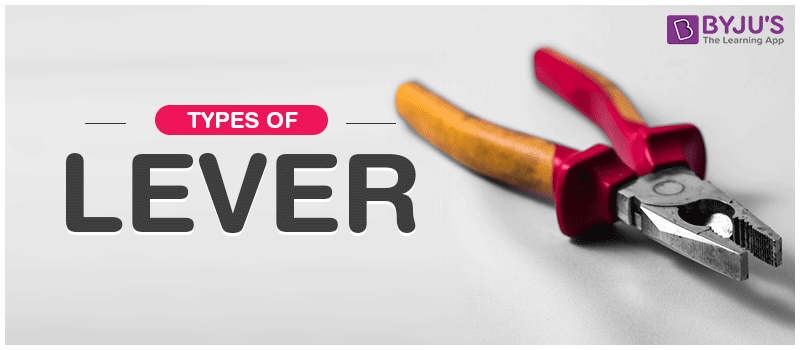Levers are the most basic machines which are used to do some work with minimal effort. A lever amplifies an input force to provide a greater output force, which is said to provide leverage. We are aware that there are various types of levers depending upon the position of the fulcrum, the force and the weight. Every tool which is used to perform work comes under any one of this category.
| Table of Contents: |
You may also want to check out these topics given below!
What are the different types of lever?

According to where the load and effort are located with respect to the fulcrum, there are three types or classes of lever:
- First-Class Lever
- Second Class Lever
- Third Class Lever
First Class Lever
This is a type of lever which has the fulcrum in between the weight and the force applied. Its order is represented as force-fulcrum-weight. This is the most basic type of lever.
Example:
- Our hand pushing an object or seesaws, crowbars.
- Using scissors represents the use of two first-class levers.
- A wheel and axle is also an example.
- Pulling a nail out of a wooden plank also represents a first-class lever.
Second Class Lever
In this, the fulcrum is at one end and the force applied is on the other end. The weight is situated in the middle of these two. The order of this would be fulcrum-weight-force. The application of force at one end will result in some work done on the other end.
Example:
- Wheelbarrow
- Staplers
- Doors or gates
- Bottle openers
- Nutcracker
- Nail clippers
Third Class Lever
These are the levers in which the fulcrum is at one end and the force is applied in the middle and the weight is on the other end. The order is represented as a weight-force-fulcrum. In this case, we have to apply more energy to displace the weight to a longer distance.
Example:
- Fishing rod
- A broom
- A baseball bat
- A bow and arrow
- Human jaw
Frequently Asked Questions – FAQs
What is a lever?
Name the different types of lever.
- First class lever
- Second class lever
- Third class lever
Give some examples of second class levers.
Wheelbarrow, staplers, doors or gates, bottle openers, nutcracker, nail clippers, etc.
State TRUE or FALSE: Fishing rod is a first class lever.
What are the different parts of a lever?
- Fulcrum – the point at which the lever rotates.
- Input force (also called the effort) – the force applied to the lever.
- Output force (also called the load) – the force applied by the lever to move the load.

good
Thank you
it’s very good
very helpful and easy to understand
i am confused between pivot and fulcrum. what is their difference?
The difference between pivot and fulcrum is that pivot is defined as the short liver on which a subsequent part rotates whereas fulcrum is defined as the point on which the pivot rotates.
Thanks so much